When you want to learn how to throw knives or if you already practice the art, you will definitely want the best throwing knives on the market today. Quality throwing knives are made of select materials, all of which ensure product durability. The knives feature unique designs and are purposefully weighted. The design of a knife ensures its ease of use.
[the_ad_placement id=”in-text-1-type-a”]Throwing knives come in an array of sizes, shapes, and designs, so for neophyte or adept thrower, there are plenty of exceptional models to buy. Investing in throwing knives is a serious endeavor – one involving careful planning and consideration.
According to KnifeUp Magazine, the difference between quality throwing knives and poorly made knives are immediately evident. Low quality weapons will have a blade made of poor metal. When a knife has a blade made with poor metals, the blade will scratch and dent with considerable ease. The lower end knives will eventually snap and break after just a couple of throws. What’s more, just hit a hard target by accident one time with poor quality throwing knives and the weapons will undoubtedly break.
When looking for good throwing knives, it is best to look for knives featuring blades made of one sheet of stainless steel metal. The latter metal ensures the durability of the knife blade and the longevity of the weapon in question.
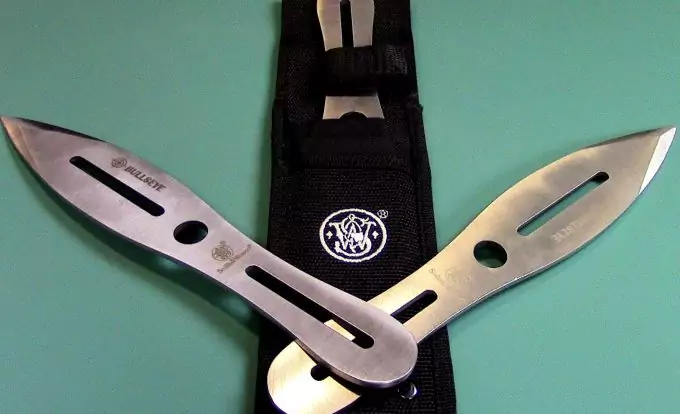
Knives of high quality construction feature a pointed, but sturdy tip. The handle should be smooth to allow a clean release from the hand, but it can also have grip enhancements. Knives used for the purposes of throwing have a dull edge. The area between the blade and the handle is the danger zone as this area is most prone to fracturing when the knife strikes a hard object.
Additional considerations must go into choosing a weapon for throwing practice. The weight of the knife needs to be a precise weight. The knife should have a straight handle, and the edge of the blade must be dull: This ensures the thrower’s safety. While the blade itself is dull, the tip of the knife is pointed.
Of course, in order to know all these, you need to practice. And, to do so, you need to learn the perfect technique for throwing a knife, right? If you want to learn, we have a fantastic tutorial on how to throw a throwing knife following several methods and ideas.
Features of the blade
Throwing knives come in array of styles. Designs vary in terms of handle appearance, grip enhancement features, blade style, handle curve, and point design. The center of gravity is not the same on all weapons either. The blade and handles can prove different from one model to the next. When buying a knife set it is imperative that you invest in a knife with a dull blade. If a blade is sharp, you will not be able to perform any blade throws; the sharpened blade would prove a danger to your hand and fingers.
Thus, sharp bladed weapons limit the types of throwing techniques a knife thrower can use. Throwing knives do not require a sharpened blade, but they do require a sharp point. The point on the blade is sharp so it can pierce and stick into a wood target.
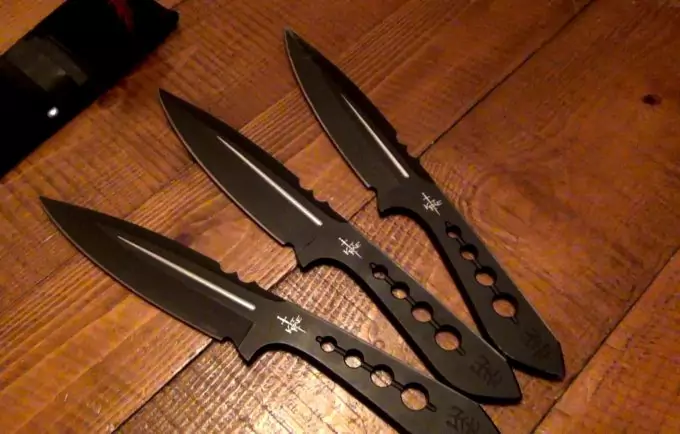
When knife buying, you should look for a blade made of good quality metals. The majority of weapons feature blades and handles made of stainless steel. In some instances, the metal proves soft and this can result in the bending of the blade.
When this happens, it is sometimes possible to repair the issue by using a hammer to pound the blade back into shape. Still, it is better to invest in a high quality blade made with top grade metals; it will ensure the longevity of the weapon. The metal blade should be tapered and conclude with a sharp point at the end of the stainless steel blade.
Throwing knife handles
Just as many throwing knives vary in terms of length, weight, and blade style, today’s knives are available with different handles. When choosing a knife, the type of handle you select is an important consideration. The handle of the knife plays a role in how the weapon releases from your hand, how it fast it spins, the pattern of the circular spin when tossed, and the knife’s ability to pierce a target. Some handle materials include:
- Wood: Knives with handles made of wood are ideal for people with smaller hands or for those who want a weapon that delivers a comfortable grip. A con associated with wood handles however, is that the wood is pieces are riveted to the metal piece of the blade. Eventually, the rivets sheer off; give way, and the wood handle pieces break off.
- Plastic or rubber: Some knives feature plastic or rubber handles. Like wood handles, plastic handles are prone to breaking and cracking when the rivets sheer off.
- Handle-less: The term handle-less when discussing throwing knives is a bit deceiving: A user can certainly take up the weapon for the purposes of throwing the knife. Rather, the term handle-less describes a weapon where the knife and blade are one piece.
Other types of handles on throwing knives include those crafted of stag horns, bone handles, and brass guards. Bear in mind that all of the latter materials do not necessarily withstand the repetitious impact that occurs when striking a wood target.
Throwing knives ergonomics
Ergonomics is a word referring to the science of product design. Manufacturers take extra measures to ensure the throwing knife you buy will work correctly. In fact, knives manufactured with ergonomically correct designs are safer than knives manufactured without such considerations.
Ergonomically correct knives must have a handle offering good grip and comfort. The throwing knife’s overall design should provide proof save for throwing purposes. The handle weight, shape, and design as well as the shape and structure of the blade, all play are part in the ergonomic-quality of the throwing knife.
A throwing knife needs to provide you with a comfortable grip. Many throwing knives have handles that are thin in terms of design. The thin handles can prove difficult to grip: this is particularly true if the thin handle is also smooth. If you end up with a poor grip, you may end up dropping the throwing knife before the toss.
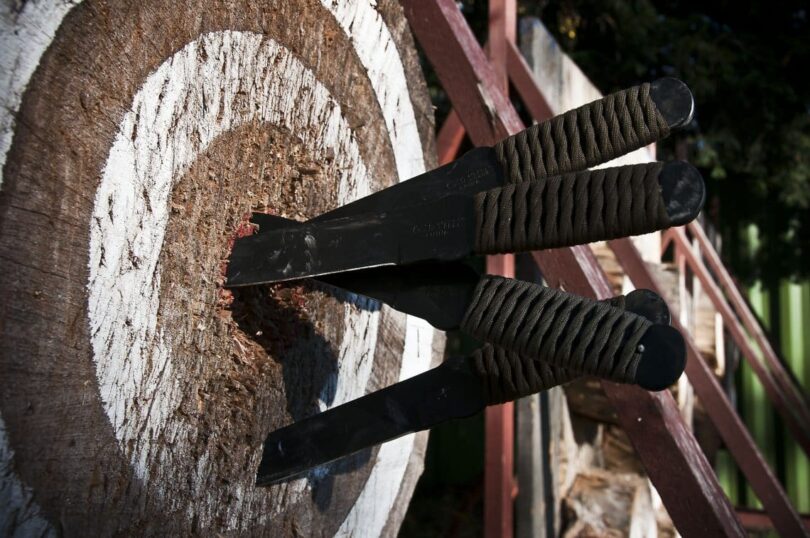
Many knife throwers prefer knives with some kind of textured handle: the textured feature offers extra grip. In addition to textured handles, some throwing knife feature handles with a curve. The latter type of weapon improves grip and can be easier to throw when you use the correct throwing technique.
Likewise, just as there are throwing knives with straight blades, there are throwing knives with curved blades. Bear in mind, straight bladed throwing knives are the better option as such weapons are easier to throw, offer greater precision, and therefore provide you with a more predictable trajectory.
Weight and length of throwing knives
It is important the throwing knives one purchases are solid and light, but there is a limit on how light the knives should be. Ultra light throwing knives, also known as floaters, can prove difficult to control and because the knives are light, it can end up bouncing off a target instead of piercing it. To judge a knife’s weight, you must multiply 1 to 1.5 ounces per inch by the throwing knife’s length. Thus, a long knife measuring 14 inches, at minimum should weight 14 ounces, and at maximum should weigh 21 ounces.
The latter weight references are ideal for throwing knives for short distances. If looking to throw weapons five meters or more, the knife should be a bit heavier. Knives with heavier weights lend greater stability to the throw.
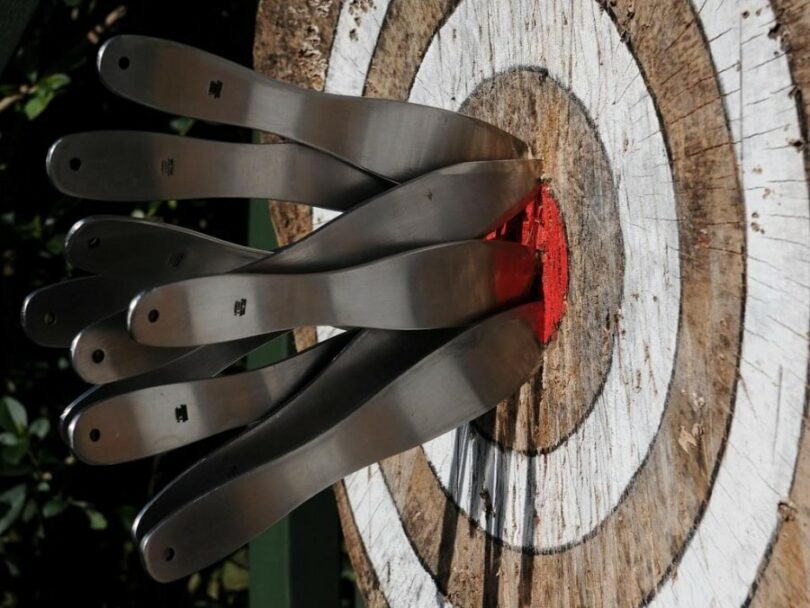
Knives range in length from as small as 6 inches up to 14 inches in length. Those who are new to the art of knife throwing should opt for longer weapons. Many throwers desire weapons with longer lengths because the weapon has a rotation that is slower when the knife is tossed.
The slower spin gives the neophyte knife thrower a bit of additional time to work on different throwing methods. Adept knife throwers like to use longer blades too, but some skilled knife throwers find lighter blades more challenging due to the faster spin the knife delivers. Bear in mind that faster spinning blades are more difficult to pierce into a target than their heavier counterparts do.
Balanced and unbalanced throwing knives
If looking for a practical, safe throwing knife that you can throw from both ends, a balanced knife is required. You can only throw an unbalanced knife from one end of the weapon. The center of gravity (COG) on a throwing blade is located in the center of the weapon, give or take 1.5 centimeters in either direction. When the weapon is perfectly balanced, it will spin in a round, circular fashion toward its intended target.
If, however, the knife is unbalanced as it would be in a knife featuring a bulky, heavy handle, the spin of the blade will have varying diameters, and it will make the blade’s trajectory difficult to estimate.
[the_ad_placement id=”in-text-2-type-a”]Some throwing blades are fitted with weights that you can use to adjust the balance of the knife. Some knife throwers find this weapon desirable because the weight adjuster gives them greater control over the performance of the weapon-throwing knife. Meanwhile, some individuals feel the adjustable weight is unnecessary, and maintain a preference for center balanced weapons.
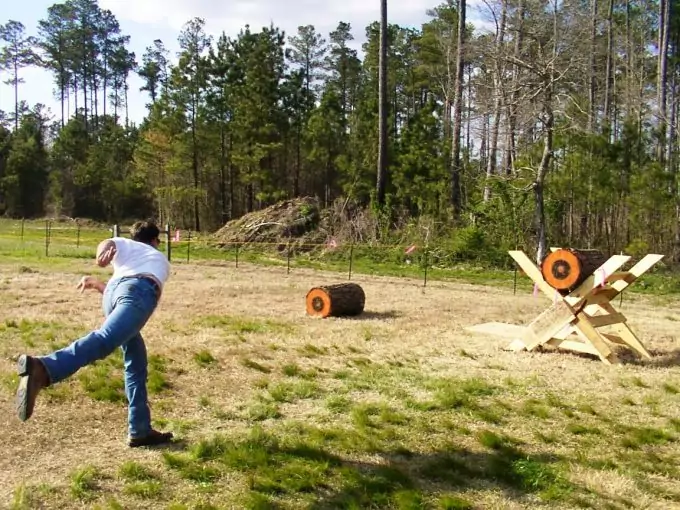
In an article written for American Survival Guide Magazine, John Bailey details the ideal specifications of a throwing knife. The knife creator suggests the best metal for knives is steel at a length not exceeding 14 inches or less than 10 inches. The knife weight ranges 1to 1.5 ounces per inch; the blade should be between 5/32 inches to 5/16 inches in terms of thickness, and buyers should look for knives with riveted handles and fibrous stock to ensure durability.
Things to avoid
Shopping for throwing knives is a serious endeavor, and one you should never take lightly.
Do not make a knife purchase without doing some research. Check out the features of the weapon, read reviews, and if possible, talk to others who have used throwing knives: You might be able to get a recommendation or two and you can find out what to avoid. Below are a few features you should try to avoid when purchasing throwing knife:
Pommels: Some throwing knives have pommels: Small counterweights attached to the end of the handle. The piece is not only decorative, but it also helps to prevent the hand from slipping off the handle of the knife accidentally. Unfortunately, pommels are not a good feature for throwing knives, because the rivets have the potential for slicing off at the interface.
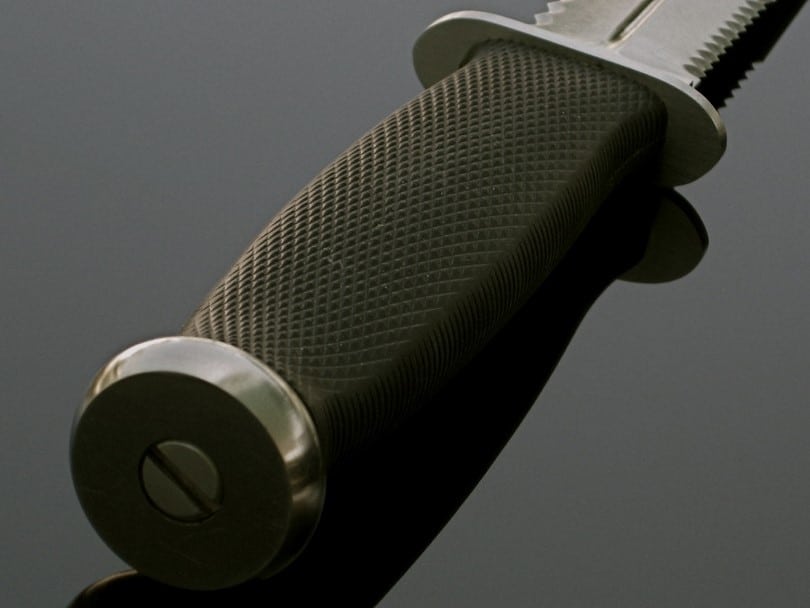
Some experts recommend handle-less knives. When a knife is fitted with a handle or pommel, it hinders one’s ability to throw the knife with ease. Some knife throwers find knives with rubber handles difficult to throw because the weighted handle disrupts the balance of the weapon.
[the_ad_placement id=”in-text-3-type-a”]Do not compromise knife quality for price. Buying throwing knives requires that you think about the type of metals the weapon is made of, the handle construction, and the durability of the knives. Price should never be the primary reason you make a throwing knives purchase; cost is a secondary importance. Getting a great price is incredibly important, but it should not be the definitive deciding factor.
More things to avoid
In the throwing knives industry, there are some top quality weapons and there are substandard weapons. There are a number of features you will want to avoid if you are looking to buy throwing knives. Avoiding the following features will ensure you are getting weapons that have a superior design, structure, safety, and throwing potential:
| Knife feature to avoid | Reason for avoidance |
| Hollow & stag handled knives | As mentioned earlier, stag handled knives tend to break easily. The same is true for knives fitted with a hollow handle. It is better to buy a weapon with a sturdy, solid handle. When buying throwing weapons, sometimes “less is more.” For visual purposes, consider cord wrapped handles instead. |
| Spring steel knives, carbon steel weapons | These types of metals cannot endure the repetitious impact that results from striking a wood target. Thus, the weapons break more easily. |
| Folding knife | Folding Knives are not a good selection for throwing. Sometimes the hinge pins in these weapons end up coming loose. In other instances, the knife will break entirely. Folding knives have another purpose and you can read all about it in our article here. |
| Poorly affixed blades | If the throwing weapon has blade connected to a hilt or partially connected to the handle, avoid the weapon. All of the latter features make the weapon weak and can contribute to breakage following target impact. |
Top throwing knives
The things that separate popular throwing knife sets from other sets are high quality features, superior design, and durability.
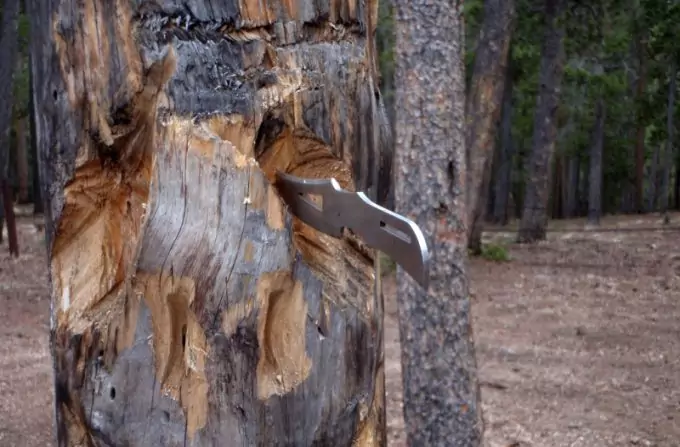
Below are some of the leading knife sets coveted by knife throwers:
- Cold Steel’s True Flight thrower: This weapon is the perfect size for throwing as it measures 12 inches in length. The weapon features a blade measuring 6.75” of 1055 Carbon steel. The manufacturer has added a black protective coating to the weapon to keep the blade safe from scratches, dings, and chips. The knife weights 9.7 ounces, so it is good for short distance throws. The blade is 5mm in terms of thickness. . The knife comes with a sheath. This weapon is popular because of its reasonable pricing too; the weapon costs between $25 and $35.00.
- Gil Hibben Cord Gripp: Is a set of three throwing knives featuring cord-wrapped handles. The knife features a 420J2 stainless steel blade. This weapon is ideal for shorter distance throws as the entire weapon measures just over 8 inches long. The weapon offers flawless spins and has a reasonable price tag between $20 and $25.
- Three Piece TK-017-3B Perfect Point knife set: The set consists of three knives, all of which have a thickness of 3mm. The stainless steel blades feature a black protective coating. This set comes with a nylon sheath. The design of the knives is also attractive. The price of the set is what makes it most attractive to knife throwers. Perfect Point has a price tag of just over $10.00.
More popular throwing knives options
- Böker’s Magnum Bailey Ziel set knife: A tournament grade set of throwing knives, the Magnum Bailey Ziel Knife features three weapons made of 20J2 stainless steel. The blades are 1/4 inch thick, and the set comes with a leather sheath featuring three compartments. The manufacture designs the set to meet, and sometimes exceed, Knife Throwing Clubs’ requirements.
The knives weight about 14 ounces and measure 13 1/4 inches. Previous users of the set find the length and weight ideal for knife throwing and that the deliver just the right spin when thrown. The knife set typically costs anywhere between $65.00 and $99.00. - Gil Hibben Competition Triple knife set: This set features single piece weapons constructed of 420 stainless steel; the length of the knives, handles included, is 12 1/8 inches. The handles are ergonomically fashioned for d grip enhancement and throwing precision. The set comes with a leather sheath to keep weapons protected and secure when not in use. The Gil Hibben Competition Triple Knife Set features a price tag ranging from about $45.00 to $65.00.
- Böker’s Magnum throwing knives: Unlike the Bailey knife set by the same manufacturer, the Magnum Throwing set has knives made of 420J2 stainless steel instead of the 20J2 stainless steel used in the creation of the Magnum Bailey Ziel set. The knives have a satin finish. A three-compartment leather sheath comes with the set. Consumers find the affordability of this knife set appealing; the set holds a price tag ranging from $40.00 to $55.00.
Proper care for throwing knives
Taking care of the throwing knives you buy will ensure the longevity of your weapons. Cleaning and caring for throwing knives is not at all difficult. With just a few simple steps, you can ensure the proper care of your weapons. To care for your weapons, implement the following measures:
- Use a sheath: When you weapon is not in use, keep it stored in a quality sheath. While a leather sheath is convenient for carrying the knife set, keeping your weapons enclosed in a thick sheath ensures your safety and the safety of others. The sheath also serves to protect your weapons from accidental damage or from being-exposed to dust and debris. If you want to make sure the sheath fits the knife perfectly, you can do it yourself following our tutorial on how to do a knife sheath.
- Wipe down your weapon: Cleaning your weapon is important, particularly if you have a knife that is made of a metal other than stainless steel. Some weapons have a tendency to rust, but with proper cleaning, you can avoid the issue. A soft cloth dampened with a bit of cold water is usually sufficient for keeping your throwing knife clean.
A quick wipe down after every use can make the weapons look attractive, and ensure the quality appearance of your weapons remains near identical to the way the knives appeared the day you bought them. Make sure you use a soft cloth to dry off the weapon thoroughly. - Proper storage: Keep your weapon in a safe area and out of reach of children. Do not leave the weapons outside of the sheath when not in use. Store the weapons in a dry, non-humid location.
In closing
For those who are interested in knife throwing, whether new to the art or an adept, there are some fantastic weaponry options available. Getting quality knives is important; you are going to want safe weapons built specifically for the purposes of throwing.
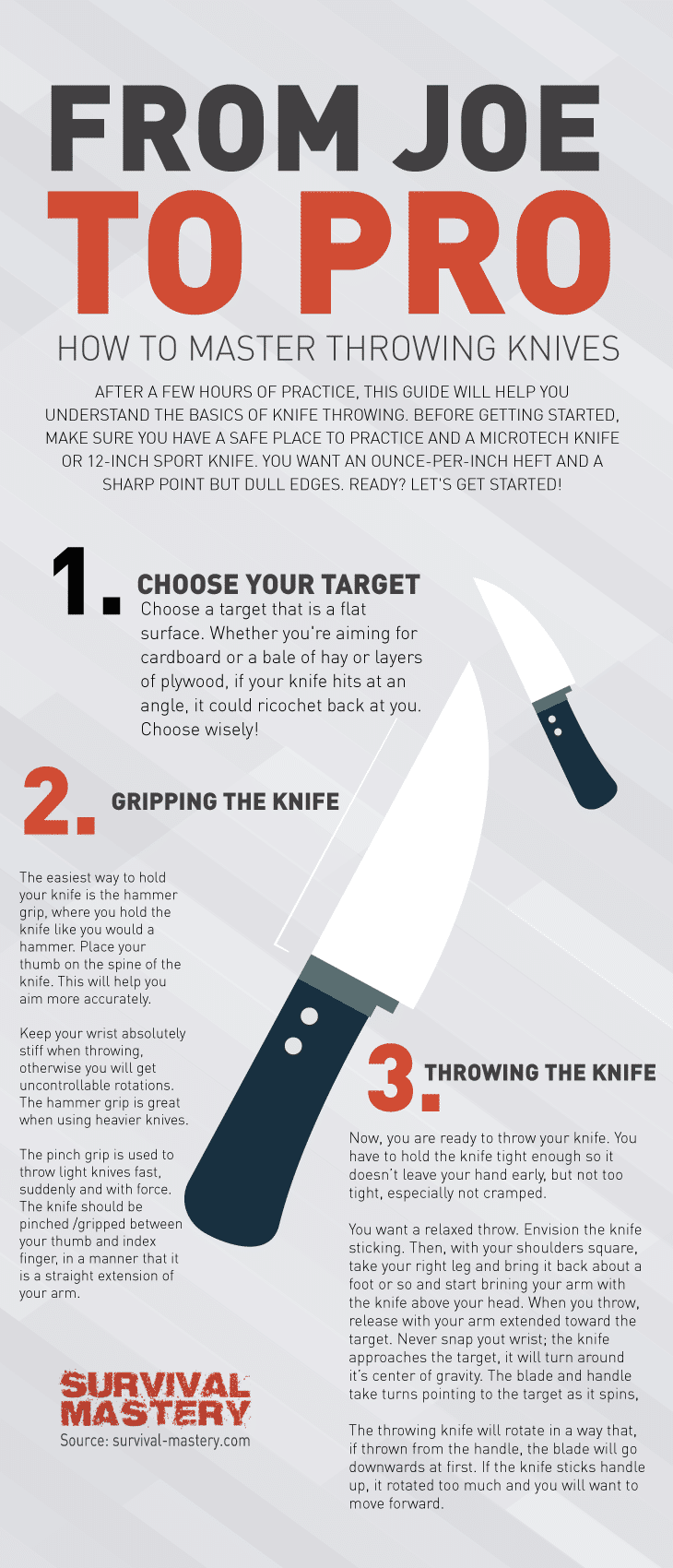
Buying throwing knife requires research in order to find the perfect set for use. An assessment of product features and an understanding of what to avoid is part of the formula one must use to find reliable, dependable, and well-designed knives. Through comparative shopping, it is entirely possible to find high quality, balanced throwing knives at affordable prices.



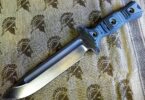
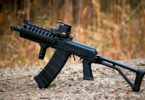

I have a set of Magnums included in my EDC and they are pretty lightweight. I sometimes forget that they are in my ankle holster. Of course, I would wear them down there if I’m wearing a skirt or shorts but I try to wear pants as much as possible.
Thank you, Sarah, for sharing your opinion with us.
I think it is more of a sport than a survival skill, I’m sure it is useful, but I wouldn’t depend entirely on throwing knives at an attacker in an emergency, it can go wrong in many ways. However, I’m confident that with practice and training it can become practical skill to defend oneself.
That’s right, Paulette, knife throwing requires practice, you never know when you will require this skill to defend yourself against an aggressor.
It is an important survival skill. It is not limited to knives, if you know what I mean.
Hello there Mr. Dawson, I have been trying knife throwing as a sport now for two months and I am finding it hard to be able to hit targets from random distances, is there a technique in the speed of throwing, and is this an effective combat skill to learn?
Knife-throwing is a sport that requires a long period of time to master, especially if the target is moving or if there are targets that have different distances. You have to know how to estimate distance and know how much strength you need to put in for the knife to be effective; mastering these definitely takes time.
What kind of knives are you using for throwing? For beginners, it is often advised to use longer knives as they will have less spin and will be easier to control than the shorter ones.
Regarding practice, try doing these:
1. Set-up a target (wood block) about ten feet from your standing position.
2. Set-up another target three feet beyond the first and so on until you reach the farthest distance you think you can throw.
3. For the first target, hold the knife at the handle and then throw it with your full force.
4. For the second target, hold the knife at the blade, if you can, and then throw it with the same force, or compensate if throwing at a much farther distance.
Remember to hold the knife at the blade for even numbered targets and at the handle for odd numbered targets (for this exercise only). Use the same amount of force and watch the rotations made by the knives. The knife should at least have one rotation going to the first target. Add half a rotation every additional three feet.
Try to do this exercise regularly. The varying target distance will help you calculate distance and force automatically.
Regarding your last question, yes it is an effective combat skill to learn as a good hit can incapacitate an opponent from afar and it can let you gain more distance between you and the attacker. Even a small gash or wound will slow them down.
If you cannot throw it, when they’re closing in, you can use the knives as self defense to block and parry.
I hope my answer helps.
– David
Would it matter if the knife is small, or long? because if you throw a knife with a total length of 7 inch, and a blade length of 3 inch. would I have to throw slower than a longer throwing knife?
– The 5orce
Hi!
It does matter because the center of gravity moves as the knife becomes longer. Throw shorter blades faster as speed is needed to add more force to the knife’s weight while longer blades would be heavier and throwing them harder will be more important than speed.
David
I just broke my first cold steel true flight thrower. Damn if it wasn’t cast steel! Wouldnt you think they would be forged or cold rolled or something besides cast?